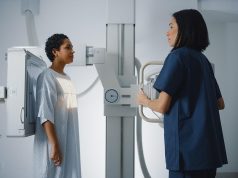Survivors have 14-fold increased risk for developing a solid subsequent malignant neoplasm
MONDAY, Jan. 7, 2019 (HealthDay News) — Survivors of childhood Hodgkin lymphoma (HL) remain at increased risk for developing subsequent malignant neoplasms (SMNs), according to research published online Dec. 17 in Cancer.
Anna S. Holmqvist, M.D., Ph.D., from Lund University in Sweden, and colleagues extended the follow-up of a previously reported Late Effects Study Group cohort of 1,136 patients who were diagnosed with HL before age 17 years (between 1955 and 1986). Patients at highest risk for SMNs were identified to create evidence for risk-based screening recommendations.
The researchers found that 196 solid SMNs (sSMNs) were identified in 162 patients. The cohort was at a 14-fold increased risk for developing an sSMN versus the general population. Forty years after an HL diagnosis, the cumulative incidence of any sSMN was 26.4 percent. Among women, risk factors for breast cancer included an HL diagnosis between ages 10 years and 16 years and receipt of chest radiotherapy. Risk for developing lung cancer was highest among men treated with chest radiotherapy at <10 years of age. The highest risk for developing colorectal cancer was seen in survivors of HL who were treated with abdominal/pelvic radiotherapy and high-dose alkylating agents. Risk for thyroid cancer was highest among women exposed to neck radiotherapy at <10 years of age. At age 50, cumulative incidence rates were 45.3 percent for breast cancer, 4.2 percent for lung cancer, 9.5 percent for colorectal cancer, and 17.3 percent for thyroid cancer among those at highest risk.
“We were able to use host and clinical characteristics to identify subgroups of Hodgkin lymphoma survivors who were particularly vulnerable to developing these new cancers,” a coauthor said in a statement.
Copyright © 2018 HealthDay. All rights reserved.








